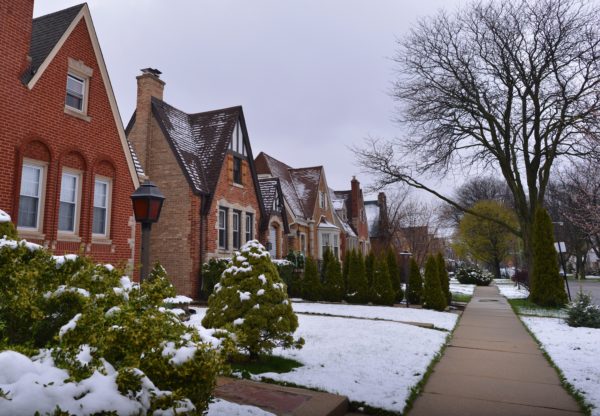Frost on Your AC or Heat Pump Could Be Costly
HVAC systems are prone to building up frost and ice, but proper maintenance can help you avoid these problems. A key step is keeping your system clear of dust and debris to prevent airflow blockage, which can create condensation and result in frosting. It’s also important to have your AC’s insulation inspected seasonally to ensure that it fits properly without blocking any vents.
If your condenser receives direct sunlight every day, a cover could help prevent the frosting that can occur with increased temperatures. A trained technician can address frost buildup on your HVAC system with a thorough inspection and suggestions about how to prevent future issues.
Why Frost Forms on Air Conditioners
Frost forms when warm, moist air leaks into a cooling unit and then comes into contact with the cold evaporator coils indoors. The contrasting temperatures create condensation, which then freezes to form frost. To prevent frost from forming, regular HVAC maintenance is critical. This includes ensuring that all seams and components are sealed as well as checking for clogs in the condensate line.
Air conditioners can become frosted over even when it’s hot outside. Additionally, outdoor components of your AC can become totally encased in frost. For example, the pipe connecting your indoor compressor to the outdoor condenser can become densely frosted in the hottest months of the year. To eliminate this problem, a professional HVAC technician can apply thick insulation to the pipe to prevent it from coming in contact with the humid outdoor air.
Refrigerant Running Low
Low refrigerant can cause indoor components to frost over, making your AC run inefficiently and causing excessive wear and tear on critical parts such as the compressor. A frosted compressor could be a sign of a leak somewhere in the system. In some cases, the corrosion that causes leaks may also cause problems with refrigerant lines, leading to uneven cooling or poor system circulation.
Why Refrigerant Levels Are Important
Low refrigerant levels can put a strain on many components in the system, leading to a system malfunction or even complete failure. If left unchecked, these problems can quickly become expensive. The best way to avoid this kind of problem is with yearly service checks and professional repairs. These steps will not only keep your AC running smoothly but will also guarantee that the right amount of refrigerant is always in circulation.
Because the refrigerant is responsible for absorbing heat inside your home, when it runs low, indoor air won’t cool properly or circulate through your house. Additionally, freeze-ups—where cool coil temperatures drop too low—may require expensive repairs. Over time, critical components can become damaged or break down completely, requiring replacement. Low refrigerant levels can also cause your AC to run constantly, putting strain on the unit and reducing its lifespan while sending your energy bills soaring.
Defrost Board Going Out
A defrost board—also called a defrost control or timer—controls the length of time and frequency that the compressor shuts off and shifts its reversing valve switches from cooling to dehumidifying mode. The purpose of a defrost board is to prevent frost accumulation on evaporator coils by controlling when the AC unit goes into a brief cycle of high cooling power, which melts away any buildup. Without a functioning defrost board, the evaporator coils become inefficient at cooling since the refrigerant flow is hindered by frost accumulation.
With a quick inspection, a technician can tell you when your defrost board needs replacement. This job is relatively inexpensive and can reduce your utility bills overnight. You may only need to replace your defrost board once throughout your air conditioner’s entire service cycle.
Inaccurate Metering
A thermostatic expansion valve regulates the flow of refrigerant in your AC by sensing environmental temperatures. The TXV is an important component because too much refrigerant can cause liquid slugging while too little can decrease system performance.
In hot weather in Fuquay-Varina, NC, the TXV will sense higher temperatures and reduce the flow of refrigerant into the evaporator, helping to maintain an optimal saturation point within the coil. This ensures the system’s efficiency, saving energy and helping keep indoor temperatures consistent.
A faulty TXV can cause excessive refrigerant to pass through the evaporator, resulting in increased frost and reduced cooling efficiency. When this occurs, your AC may blow warm air or cycle on and off excessively. A trained technician can inspect your system and reset, repair, or replace the TXV as necessary.
Frost Forming on Your Heat Pump
Heat pumps use refrigerant to transfer heat indoors in cold weather and outdoors when temperatures increase. When that heat transfer becomes inefficient, frost can accumulate on the outdoor part of the system. A technician can reduce the chance of frost forming on your heat pump with maintenance work such as cleaning the outdoor coil, replacing faulty parts and using an insulation barrier between the unit and the surrounding walls.
In winter, when condensation builds up on a heat pump’s evaporator coils, it can freeze and eventually cause the system to stop working. A clogged air filter may be the culprit as this can reduce airflow over the coils and lead to increased ice formation. Additionally, keeping outdoor components free from snow and debris can help maintain proper airflow and prevent ice from forming on your heat pump.
Frost on a Mini-Split System
Low refrigerant in a ductless mini split can result in frost buildup on the evaporator or compressor. Whether it’s caused by a leak, improper recharge, poor air circulation, or a defective compressor, frost or ice can damage the system and cause operating inefficiency.
While ductless mini splits are efficient and economical in areas with hot summers and cold winters, they often require additional service to ensure that they run smoothly. When you notice strange noises coming from your system in the summer, it could be a sign of liquid slugging caused by improper refrigerant levels. Only a technician should address this problem because each system requires a specific amount of refrigerant to operate safely.
How a Trained HVAC Tech Can Help
With a comprehensive inspection, an HVAC technician will be able to pinpoint exactly why your system is frosting over and fix the problem right away. They can use professional tools and techniques to determine whether the issue stems from inadequate airflow, clogged return registers, or an insufficient amount of refrigerant. Some problems can be exacerbated by amateur repairs, so it’s important to work with professionals in every case.
Getting Your HVAC System Back in Great Shape
At Thermo Direct, we offer a full range of services for air conditioners, heat pumps, and mini-split systems. Our service area includes Raleigh, North Carolina and the surrounding communities. Whether you’re looking for furnace repair, heater installation, or duct sealing service, we’re the best choice for the job. We also offer convenient, professional electrical services such as surge protection, circuit breaker repair, and lighting installation. Call us today at Thermo Direct to schedule an appointment.









